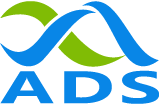Sanger sequencing data files can be used to measure copy number proportions
A couple of months ago, we read the overlapping peaks of both the wildtype and the BRAF V600E mutant traces in the electropherogram of Sanger sequencing from a clinical sample. We wanted to find out the variant allele frequency (VAF). The first thing we thought about is next generation sequencing (NGS). Last week, I read this interesting review about estimating copy number proportions by Sanger sequencing. That means we do not have to do an NGS analysis, just upload the Sanger sequencing file to a specific software to get the VAF data. That saves time and money!
Traditionally, people think Sanger sequencing provides accurate sequencing results with limited sensitivity, providing qualitative, but not quantitative results. When determining allele frequency or copy number proportions, we often turn to other quantitative methods such as qPCR and NGS. But in the recent years, different computer software has been developed to measure copy number proportions by analyzing the sanger trace files right after sequencing without using another lab technique.
Applications of copy number proportion measurement
Based on the review, multiple applications can use software that quantifies copy number proportion using Sanger sequencing data. These applications play important roles in disease studies and diagnosis:
- Single nucleotide polymorphism (SNP) and indels analysis using QSVanalyzer or Mutation Quantifier.
- Base-editing efficacy using CRISPR-Cas 9 and other systems using TIDE , BEAT or EditR.
- Estimate of C-methylation status by measuring relative peak heights in direct bisulfite-PCR sequencing
- Quantification of RNA editing using a peak-calling program such as BioEdit or Chromas
- Quantification of copy number variations using the same tools as for base-editing
In addition, quantification of drug resistance in a population of bacteria and estimation of anti-viral gene target mutations in HIV and HCV are also important applications.
Advantages of quantification of copy number proportions using Sanger sequencing
Unlike other methods for quantitative or semi-quantitative tools, software analysis based on Sanger sequencing trace files saves time, reduces lab work, and is cost-effective. Since Sanger sequencing is a standard protocol that is already done before quantification of the interest, analysis by a free or commercial software is straightforward without application of another lab technique.
Overall, I am amazed that Sanger sequencing as a quantification tool has been fine-tuned and widely accepted. The “comeback of Sanger sequencing” as the author put it in the title, means extension of Sanger sequencing from qualitative to quantitative in the new era, killing two birds with one stone.
If you are using Sanger sequencing for any of these quantifications, I would love to hear more from you. And maybe you would also like to try our Sanger sequencing reagents for your experiments to save you more.
